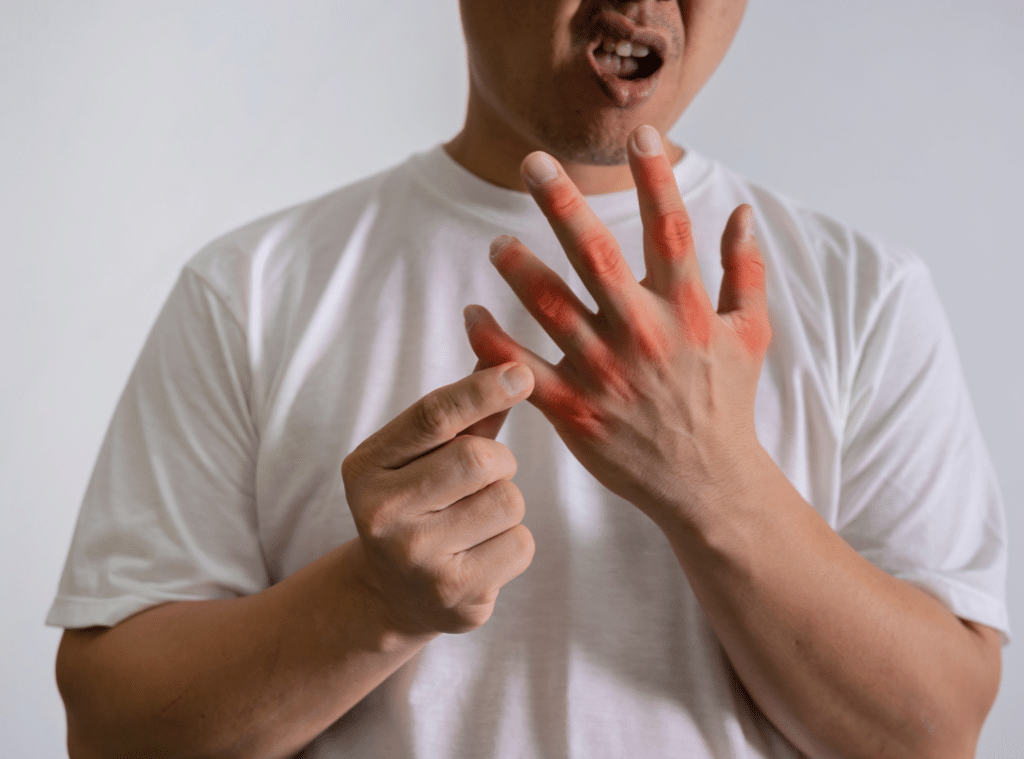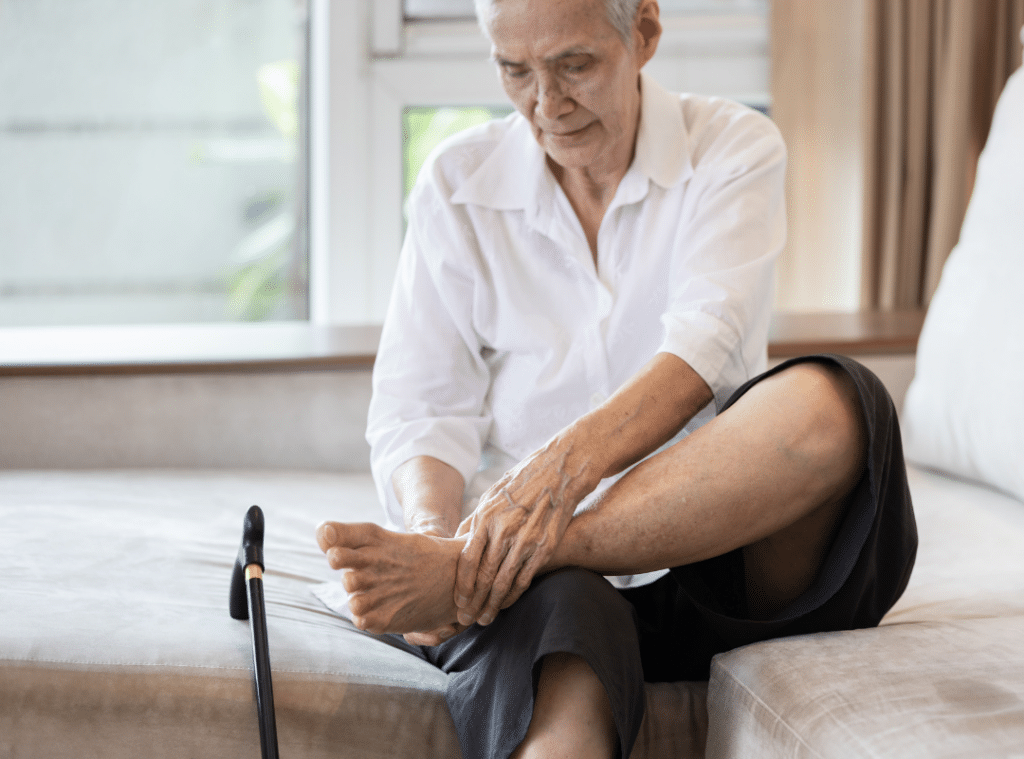Nerve Healing Signs During Recovery at Westmont
Nerve recovery is a gradual process filled with subtle but meaningful milestones. At Westmont of La Mesa, residents undergoing nerve rehabilitation often ask how to recognize nerve healing signs. This curiosity is natural; understanding your body’s signals brings reassurance and clarity. Whether it’s a tingling sensation, a flicker of muscle control, or fluctuating pain levels, these changes may indicate that the nervous system is slowly repairing itself. While recovery varies from person to person, specific indicators can point to progress. Knowing what to expect, how to manage discomfort, and how to accelerate healing makes the journey smoother. And with the proper support and resources, you can feel empowered every step of the way. Let’s explore the recovery process in more detail.
What Are the Stages of Nerve Healing?
Healing happens in distinct stages. The first is inflammation and repair, marked by swelling and discomfort. This response clears debris and sets the stage for regeneration. Next is the regrowth phase, where damaged nerve fibers begin to reconnect. Finally, functional recovery begins—you may regain strength, feel new sensations, or notice changes in coordination. These are promising signs of nerve healing, showing the system re-establishing itself. Some may ask, “what are the stages of nerve healing?” This three-step journey is your roadmap to recovery. Staying patient and tuned in to these stages helps manage expectations and motivates continued progress.
Recognizing Compressed Nerve Healing Signs
If you’re recovering from a pinched or compressed nerve, you may wonder what signs show you’re improving. Compressed nerve healing signs include reduced tingling, improved movement, and intermittent pain rather than constant pain. Many patients report experiencing twitching or burning sensations. You might wonder, is twitching a sign of nerve healing? Or is burning a sign of nerve healing? Yes, in some cases, these are common symptoms of nerves firing back up as they repair.
As odd as it may feel, that random twitch in your hand or a sharp but brief burning in your foot can mean progress. It often reflects restored connections and electrical activity as nerves repeatedly try to send signals. At Westmont of La Mesa, our wellness team helps you track these symptoms and adjust your therapy accordingly.
How to Help Nerves Heal Faster
While nerve recovery takes time, there are ways to support it. Residents frequently ask how to help nerves heal faster without causing setbacks. The answer includes a balanced diet, gentle physical activity, adequate sleep, and effective stress management. Nutrient-rich foods, like those mentioned in our nerve health article, can aid in regeneration. Incorporating B vitamins, healthy fats, and antioxidants reduces inflammation and supports cellular repair.
Another tip? Engage in movement encouraging circulation, such as low-impact stretching or supervised therapy. At Westmont, we tailor care plans to fit individual recovery needs. That way, healing isn’t rushed but supported with intention and expertise. These practices are ideal if you’re learning how to help nerves heal faster, sustainably.
Sensory and Motor Function Recovery
A key indicator of healing is the gradual return of sensation and control. You might notice numbness fading, or feel prickling where there was once nothing. These are typical and positive nerve healing signs. Motor skills often follow—simple tasks like buttoning a shirt or lifting a glass get easier. These changes may seem small, but they represent considerable steps in nerve repair.
You might also feel “phantom” sensations. It could be light pressure or a flutter with no apparent cause. These aren’t setbacks; they’re signs of your nervous system rewiring. If you notice discomfort or inconsistent symptoms, communicate them to your care team. This helps shape a more effective and personalized recovery experience.

Is Burning a Sign of Nerve Healing?
Many individuals ask, is burning a sign of nerve healing? In some instances, yes. A burning or tingling sensation often arises when nerve endings start regenerating and firing again. It doesn’t mean damage worsens; instead, it signals that dormant pathways are reactivating. Of course, it should be evaluated if the sensation becomes overwhelming or chronic. At Westmont of La Mesa, we closely monitor symptoms to distinguish between expected discomfort and complications.
We encourage residents to report changes promptly as part of a personalized care approach. Tracking these sensations over time often reveals clear trends in healing. So next time you wonder if burning is a sign of nerve healing, know that it might be a step toward recovery.
Is Twitching a Sign of Nerve Healing?
Muscle twitching can be surprising. If it appears during recovery, is twitching a sign of nerve healing? It can be. When nerves begin to reconnect with muscles, small contractions occur. This is particularly common in the hands and feet. While harmless in most cases, it should be documented and shared with your healthcare provider.
Twitching is typically more prominent during rest, especially after physical activity. A symptom journal is helpful, noting when it occurs, how long it lasts, and whether it coincides with other sensations. With guidance, you can better understand what your body is telling you. Noticing is twitching a sign of nerve healing can bring relief when viewed as part of your overall progress.
Sleep’s Role in Nerve Repair
Sleep may seem unrelated to nerve healing, but it’s essential. During deep rest, your body repairs damaged tissues, including nerves. Prioritizing 7 to 9 hours of quality sleep allows these processes to unfold uninterrupted. Creating a bedtime routine, reducing caffeine, and maintaining a consistent schedule can all improve sleep quality. Restful sleep amplifies other recovery strategies, especially physical therapy and nutrition.
For those recovering at Westmont, we offer support to improve sleep habits. Whether setting up a comfortable sleep environment or managing pain before bedtime, our staff is here to help. It’s another example of how small lifestyle changes support significant healing.
Progress Tracking and Provider Communication
Recovery isn’t always linear, which makes regular check-ins important. Keeping a log of your symptoms helps detect emerging nerve healing signs. Whether you’re feeling new tingling, improved grip, or muscle twitching, noting these helps your care team provide better insight.
Open communication with providers at Westmont ensures treatments adapt to your healing journey. Discussing setbacks or plateaus is just as important as sharing progress. We create space for these conversations and encourage residents to stay involved in every recovery step.
Support, Patience, and Personalized Care
Ultimately, nerve healing is a combination of both physical and emotional processes. Celebrating every milestone—such as reduced pain or improved movement—keeps morale high. With guidance and support, the process becomes less daunting. Westmont of La Mesa is here to provide the resources and encouragement needed. Our team helps you identify all kinds of nerve healing signs, from significant improvements to the most minor wins.
If you or a loved one is seeking a supportive environment for nerve recovery, we invite you to experience the difference Westmont can make.
Schedule a tour today or call us at 619-369-9700. Let’s take the next step in your healing journey together.
Discover the level of care you or your family member requires. What Level of Care Do You Need?
Frequently Asked Questions
How do you know if a nerve is healing?
Signs that a nerve is healing often include a gradual return of sensation, tingling, or a “pins and needles” feeling in the affected area. You might also notice improved muscle strength or coordination over time. Healing can be slow, and progress may come in small increments. Tracking changes and consulting with a healthcare provider for proper evaluation is essential.
What is the best exercise for nerve damage?
Gentle stretching and low-impact aerobic exercises like walking or swimming are often beneficial for nerve damage. These activities help increase blood flow and reduce stiffness without putting too much strain on the body. Physical therapy may include targeted exercises that promote nerve regeneration and muscle control. Always consult a professional before starting a new routine to ensure safety and effectiveness.
How long do nerves take to heal?
Nerve healing varies depending on the severity and location of the damage. In general, nerves grow about one inch per month, so a full recovery can take several months to a year or more. Minor nerve injuries may heal faster, while severe damage may require surgical intervention and a longer rehabilitation period. Regular medical checkups can help monitor progress.
What repairs nerve damage naturally?
A balanced diet rich in vitamins B1, B6, B12, and antioxidants can support natural nerve repair. Regular exercise, proper rest, and reducing stress also play a role in healing. Some people benefit from natural supplements like alpha-lipoic acid or turmeric, though it’s best to consult a healthcare provider before using them. Lifestyle changes can support the body’s ability to recover over time.








